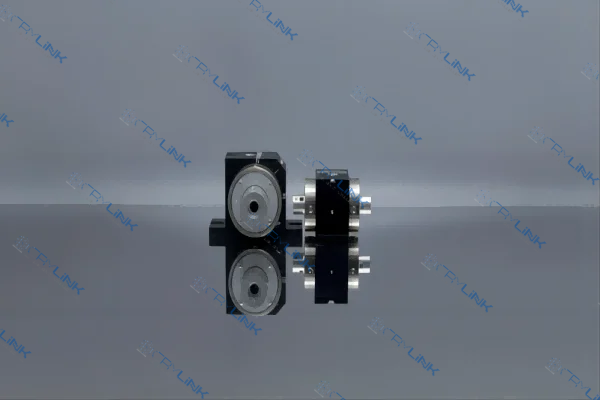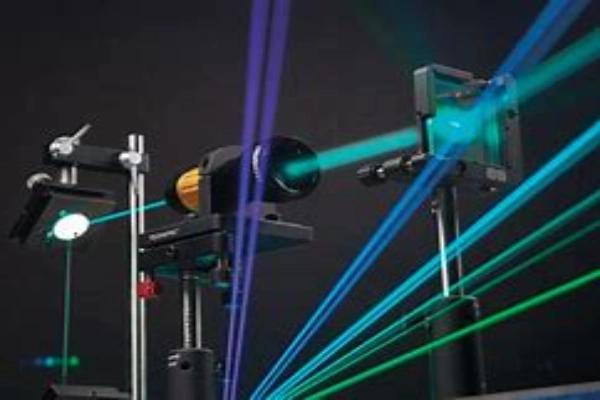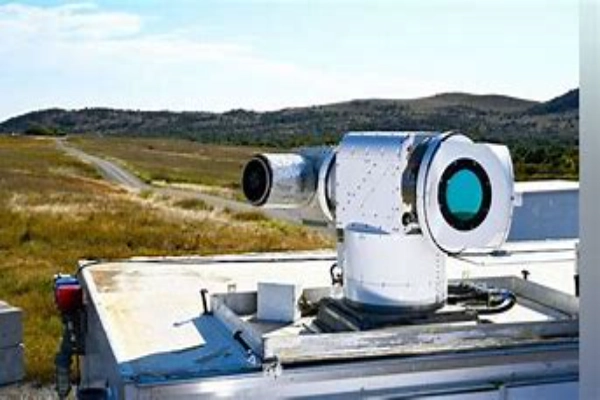What is a Faraday Isolator?
A Faraday isolator is a sophisticated optical device, pivotal in numerous optical applications. At its core, it operates on the principle of allowing light to traverse in just one direction, acting as a one-way street for photons. This unidirectional flow of light is not just a fascinating phenomenon, but it serves a critical purpose: safeguarding optical systems.
In any optical system, especially those involving high-power lasers, unwanted reflections can pose significant challenges. Such reflections, if not managed, can travel back into the system, interfering with the original light source. This not only degrades the performance of the system but, in extreme cases, can even lead to the damage or destruction of sensitive equipment. It’s here that the Faraday isolator demonstrates its true value.
By effectively blocking these rogue reflections, a Faraday isolator ensures that the optical system operates at its optimal efficiency. It acts as a protective barrier, shielding lasers and other optical components from potential harm. The sheer importance of this device becomes evident when considering the precision and sensitivity required in many modern optical applications, from medical lasers used in surgeries to high-tech research equipment in laboratories. In essence, the Faraday isolator stands as a silent guardian, ensuring the smooth and safe operation of myriad optical systems.

How does a Faraday Isolator work?
The Faraday isolator, in its essence, is a marvel of optical engineering, cleverly harnessing the Faraday Effect to achieve its unique functionality. To understand its operation, one must first delve into the Faraday Effect itself. Discovered by the renowned scientist Michael Faraday in the mid-19th century, this effect describes how a magnetic field can influence the behavior of light passing through certain materials.
Imagine light as a wave, oscillating in a particular plane called the plane of polarization. When this light wave passes through a material situated within a magnetic field, something intriguing happens: the plane of polarization begins to rotate. The strength and direction of the magnetic field, along with the properties of the medium, dictate the degree of this rotation.
Now, integrating this principle into the Faraday isolator involves the strategic placement of polarizers. The isolator typically comprises an input polarizer, a Faraday rotator (the medium exhibiting the Faraday Effect), and an output polarizer. As light enters the isolator, the input polarizer ensures it has a specific polarization. As this polarized light traverses the Faraday rotator, its plane of polarization rotates. When it reaches the output polarizer, which is oriented at an angle to the input polarizer, it can pass through seamlessly. However, any light attempting to travel in the reverse direction encounters a misalignment in polarization due to the rotation, effectively blocking its path.
In this manner, the Faraday isolator guarantees unidirectional light transmission, a feat achieved through the ingenious fusion of the Faraday Effect and precise optical design.
What is the main role of a Faraday Isolator in optical systems?
The intricate world of optical systems demands precision and reliability, and the Faraday isolator emerges as an unsung hero in this domain. This device’s primary role, while seemingly simple, holds immense importance: safeguarding sensitive optical equipment from the potentially harmful effects of back reflections.
To appreciate the significance of this role, one must understand the challenges posed by back reflections. When light, emitted from a source like a laser, interacts with various components in an optical system, a portion of it can be reflected back towards the source. This isn’t just a minor inconvenience; these reflections can wreak havoc. They can introduce noise, interfere with the original signal, and in some cases, even destabilize the laser’s operation. In high-power laser systems, such uncontrolled reflections can lead to catastrophic damage, rendering expensive and intricate equipment useless.
The Faraday isolator, with its unique ability to allow light to travel in only one direction, effectively becomes a gatekeeper. It ensures that any reflected light doesn’t get a chance to re-enter the system, thus preserving the integrity and stability of the optical setup. Whether it’s in cutting-edge research laboratories, telecommunications infrastructure, or medical equipment, the Faraday isolator plays a pivotal role in maintaining the health and efficiency of the system.
In essence, while the components within an optical system are meticulously designed to capture, transmit, or manipulate light, the Faraday isolator stands guard, ensuring that these processes occur without the disruptive influence of unwanted reflections

How to choose the right Faraday Isolator?
Navigating the vast landscape of optical components can be daunting, and the Faraday isolator is no exception. Selecting the right one is crucial, not only for optimal performance but also for the longevity and safety of the entire optical system. Here’s a deeper dive into the factors that guide this selection:
Wavelength of Operation: Different applications require lasers of varying wavelengths, from ultraviolet to infrared. A Faraday isolator must be tailored to the specific wavelength to ensure maximum efficiency. It’s imperative to choose an isolator that’s optimized for the exact wavelength range of your system to prevent any degradation in performance.
Power Levels: Different optical systems operate at varied power levels, from low-power laboratory setups to high-power industrial lasers. The Faraday isolator should be capable of handling these power levels without introducing significant losses or undergoing damage. An isolator designed for low-power operations may not fare well in a high-power environment, potentially risking both the isolator and the connected equipment.
Desired Insertion Loss: Every optical component, including Faraday isolators, introduces some degree of loss when light passes through it, known as insertion loss. For certain critical applications, even minimal losses can be detrimental. It’s crucial to select an isolator that offers the lowest possible insertion loss for your specific requirements.
Physical Dimensions and Design: The practical aspects of integrating a Faraday isolator into an existing system can’t be overlooked. The isolator’s size and design should be compatible with the physical constraints of the optical setup. Additionally, certain designs might offer better heat dissipation or easier alignment, factors that can be significant in specific applications.
In summary, while the fundamental principle behind each Faraday isolator remains consistent, their specifications can vary widely. An informed selection, based on a thorough understanding of both the isolator’s characteristics and the system’s requirements, is paramount to achieving optimal performance and system longevity.

How does a Faraday Isolator differ from other optical components?
Optical systems are replete with a myriad of components, each serving distinct functions to manipulate, direct, or modify light in various ways. From lenses that focus light to beam splitters that divide light, the range is vast. Amidst this extensive lineup, the Faraday isolator carves out a special niche for itself, distinguished by its unique mechanism and purpose.
Utilization of the Faraday Effect: While many optical components rely on principles like refraction, reflection, or diffraction, the Faraday isolator’s operation hinges on the Faraday Effect. This effect, wherein the plane of polarization of light rotates when passing through a material under a magnetic field, is the cornerstone of the isolator’s functionality. This magnetic-field-induced change in light is not commonly employed in most other optical devices, making the Faraday isolator stand out.
Unidirectional Transmission: Many optical components can modify the direction of light, like prisms or mirrors, but they don’t inherently dictate a one-way path for light. The Faraday isolator, on the other hand, ensures that light travels strictly in one direction. This unidirectional flow is not just a feature—it’s the very essence of the device.
Protection from Back Reflections: While other components might alter or direct light, the Faraday isolator plays a protective role. Its primary mission is to shield sensitive equipment, particularly lasers, from potentially damaging back reflections. This protective aspect is not the main function of most other optical components, which are more focused on light manipulation than safeguarding equipment.
In essence, the Faraday isolator is not just another piece in the optical jigsaw. It’s a specialized component, designed with a very specific and crucial role in mind. Its uniqueness lies in its blend of the Faraday Effect, unidirectional operation, and protective capabilities—a combination not found in the vast majority of optical devices.

What are the main application areas for Faraday Isolators?
Faraday isolators, with their unique capability to ensure unidirectional light transmission, find their place in a diverse array of applications across various industries. These sectors demand precision, reliability, and often, the safeguarding of high-value equipment, making the Faraday isolator an indispensable tool. Let’s delve deeper into its primary application areas:
Laser Systems: In laser setups, feedback or back reflections can destabilize the laser, leading to fluctuations in output and potential harm to the system. Faraday isolators effectively eliminate this risk by ensuring any reflected light doesn’t reach the laser source, thus maintaining system stability and prolonging the life of the laser.
Fiber Optic Communication Systems: In the realm of telecommunications, signal integrity is paramount. Faraday isolators, when deployed in fiber optic systems, prevent unwanted reflections that can degrade signal quality, ensuring clear and uninterrupted data transmission over vast distances.
Research Labs: Scientific research often requires extremely precise optical measurements. Any interference or noise can skew results, leading to inaccuracies. Faraday isolators ensure that experimental setups, especially those involving lasers, remain stable and free from unwanted optical feedback, paving the way for accurate and repeatable results.
Medical Laser Applications: Medical procedures employing lasers, such as eye surgeries or skin treatments, require utmost precision. Any inconsistency in the laser output can have adverse effects. Faraday isolators in these systems ensure that lasers operate consistently, enhancing the safety and efficacy of medical treatments.
Military and Aerospace Applications: In fields where the stakes are exceptionally high, the reliability of optical systems becomes even more critical. Whether it’s laser-based targeting systems, satellite communications, or advanced sensors, Faraday isolators play a vital role in ensuring that these systems operate flawlessly, safeguarding both equipment and personnel.
In summary, Faraday isolators, with their unique capabilities, have solidified their position as a cornerstone in various industries. Their ability to protect, stabilize, and enhance the performance of optical systems makes them a sought-after component in any application where light manipulation and directionality are of the essence.

Which factors influence the performance of a Faraday Isolator?
Performance can be influenced by:
The quality and properties of the materials used.
The strength and uniformity of the magnetic field.
Temperature fluctuations.
The alignment and quality of the polarizers.
What is the historical background of the Faraday Isolator?
The Faraday isolator’s foundation, the Faraday Effect, was discovered by Michael Faraday in 1845. The development of isolators for practical applications in optics and communications began in the 20th century with advancements in material science and technology.
What materials are used to make a Faraday Isolator?
Common materials used in Faraday isolators include terbium-doped glass and certain garnet crystals, which exhibit a strong Faraday Effect. The choice of material depends on the specific requirements of the application.
What are the future development trends for Faraday Isolators?
The future for Faraday isolators looks promising with:
- Miniaturization for integrated optical systems.
- Development of materials with enhanced properties.
- Applications in emerging fields like quantum communication and high-power laser systems.
By understanding these fundamental aspects of Faraday isolators, one can appreciate their significance in the modern optical landscape and their potential for future innovations.

Frank
Frank graduated from the University of Shanghai for Science and Technology, majoring in optics. As a technical engineer at Crylink Company, he deeply understands crystal materials and laser components.
Related Video(s) with this Article
Related Product(s) with this Article
Related Application(s) with this Article
